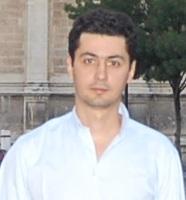Costin-Ioan Popescu, PhD

Group: Viral Glycoproteins
Department: Viral GlycoproteinsScientific Researcher II
Biography
Papers
-
. "Dynamics of serum cross-neutralization capacity against SARS-CoV-2 Delta variant in convalescent COVID-19 patients", Journal of medical virology 96(2): e29448, (2024)
doi: 10.1002/jmv.29448
IF: 6.80AI: 1.82 -
. "A polycarboxylic chelating ligand for efficient resin purification of His-tagged proteins expressed in mammalian systems", RSC Advances(10): 23931–23935, (2020)
IF: 3.04 -
. "Targeting TRAIL", Bioorg Med Chem Lett 18(29): 2527-2534, (2019)
IF: 2.45
Grants
Hepatitis C virus (HCV) is an important human pathogen that infects the liver and establishes chronic infection in the majority of cases, leading to cirrhosis and hepatocellular carcinoma over the course of many years. Despite recent progress, details of the HCV life cycle are still missing, with the HCV assembly process being particularly poorly understood.
We aim to produce high yields of novel HBV/HCV antigens with superior immunogenic properties in plants and mammalian cells, based on innovative molecular design and establish in premiere an advanced biotechnological platform for production of best vaccine candidates antigens in algae.
This project aims to develop a sensitive high-throughput screening platform by generating an endogenously tagged interleukin-1β reporter cell line by CRISPR-Cas9 technology, able to monitor stimulated IL-1β secretion with the purpose to identify new chemical compounds with anti-inflammatory activity that will be validated in primary macrophages and a mouse model for sepsis.
HCV is a major cause of chronic hepatitis worldwide. A better understanding of the HCV life cycle is needed to develop new treatments against this virus. A peculiarity of HCV is the crucial role played by both structural and non-structural proteins in the assembly process. Indeed, practically all HCV proteins have been shown to be involved in the virion assembly process. The present project aims to characterize the spatial and temporal relationship between all the viral proteins during viral assembly.
 Romanian Academy
Romanian Academy